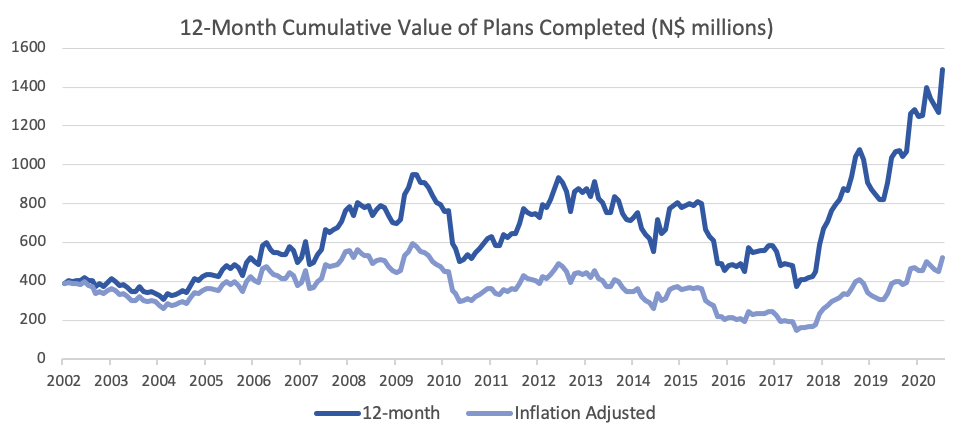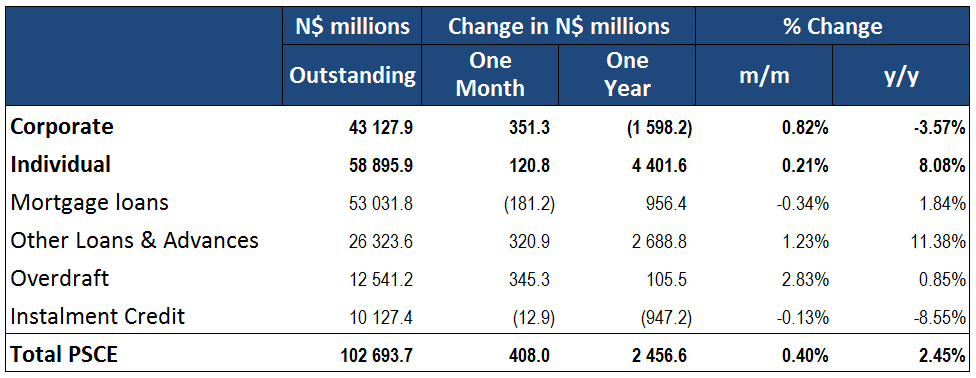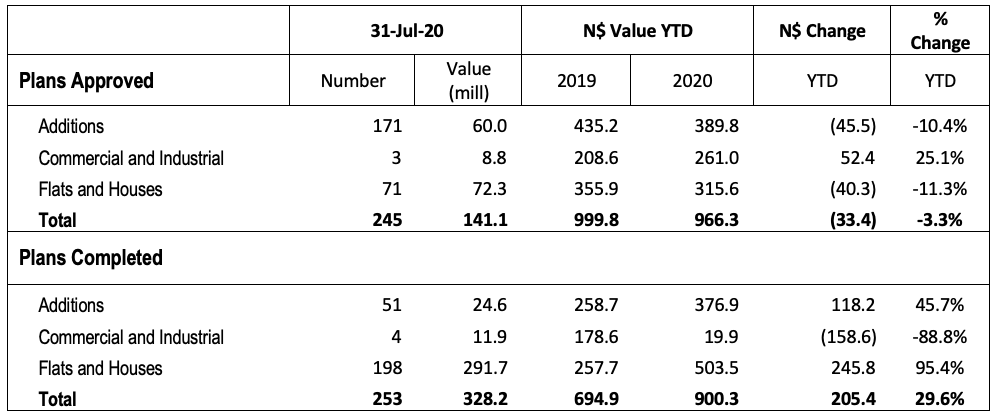
A total of 245 building plans were approved by the City of Windhoek in July, 25 fewer than in June. In monetary terms, approvals decreased by N$32.6 million to N$141.1 million, an 18.8% m/m decline from June. The number of completions for the month of July stood at 253, valued at N$328.2 million. Year-to-date, N$966.3 million worth of building plans have been approved. On a twelve-month cumulative basis, 2,007 building plans were approved worth approximately N$1.96 billion, 6.9% higher in value terms than cumulative approvals as at July 2019.
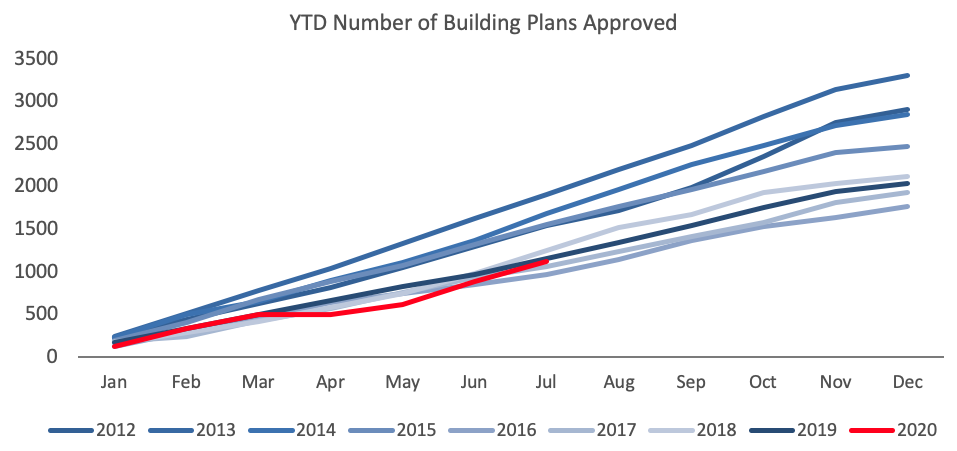
The largest number of building plan approvals in July were made up of additions to properties. 171 additions to properties were approved with a value of N$60.0 million, 17.7% less in value terms than in July 2019. We continue to see more additions to properties being approved but with a lower overall value being added. Year-to-date 860 additions to properties have been approved with a value of N$389.8 million, a 10.4% y/y decline in value terms. 51 additions worth N$24.6 million were completed during the month.

New residential units accounted for 71 of the total 245 approvals registered in July, 5 fewer than the 76 residential units approved in June. In value terms, N$72.3 million worth of residential units were approved in July, which is in line with the value of residential approvals in June. Year-to-date 230 residential units have been approved, 14 more than during the corresponding period in 2019. In monetary terms, N$315.6 million worth of new residential plans have been approved year-to-date, a decrease of 11.3% when compared to the corresponding period last year. This indicates that while more residential units are planned to be built, it will be smaller or lower valued units than approved in the same period last year. 198 new residential units worth N$291.7 million were completed during the month.
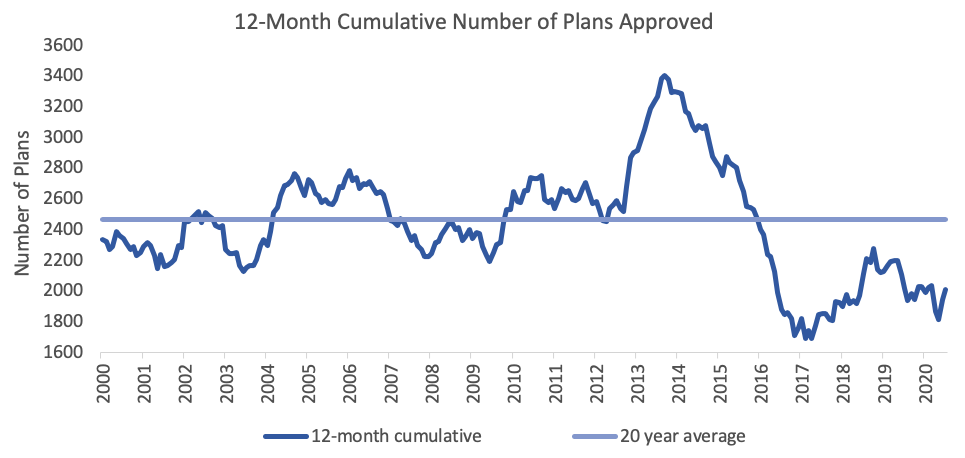
Commercial and industrial building plans approved in July amounted to 3 units, worth N$8.8 million. On a year-to-date basis, the number of commercial and industrial approvals increased by 34.8% y/y in July to 31 units, worth approximately N$261.0 million, an increase of 25.1% y/y in value terms over the period ending July 2019. 4 commercial and industrial units worth N$11.9 million were completed during July.
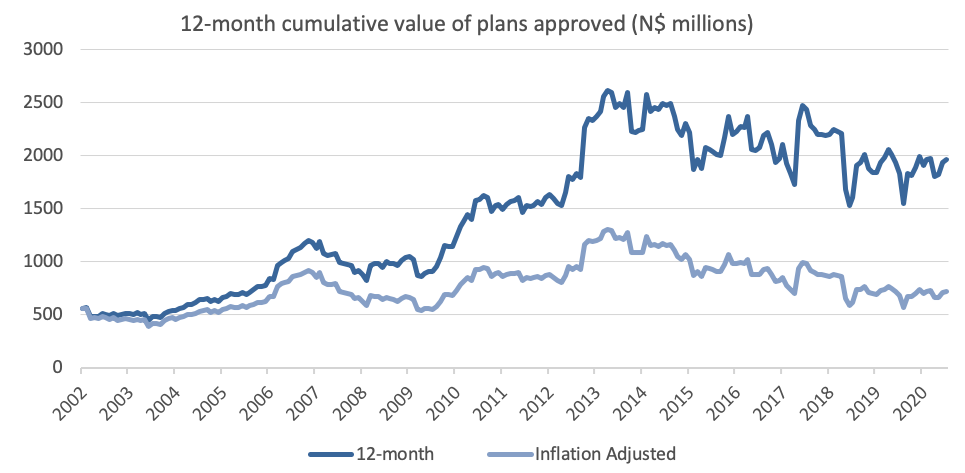
During the last 12 months, 2,007 building plans have been approved, decreasing by 0.3% y/y in terms of number of approvals, but increasing by 6.9% y/y in terms of value. While there has been a slight up-tick in cumulative approvals over the last 3 months, the growth was driven mainly by approvals in additions to properties and new residential units which are of lower relative value. Growth in commercial and industrial construction activity remains extremely subdued.
City of Windhoek’s data shows that the average waiting period from submission to approval for residential and commercial units was 137 days, meaning that most of the submissions were done just before the lockdown period. It thus remains to be seen how many of these approvals will result in actual building activity as both businesses and consumers are still recovering from the impact of the lockdowns and are unlikely to still be in the financial position to go ahead with these building projects. We expect construction activity to remain under pressure over the short-term.
